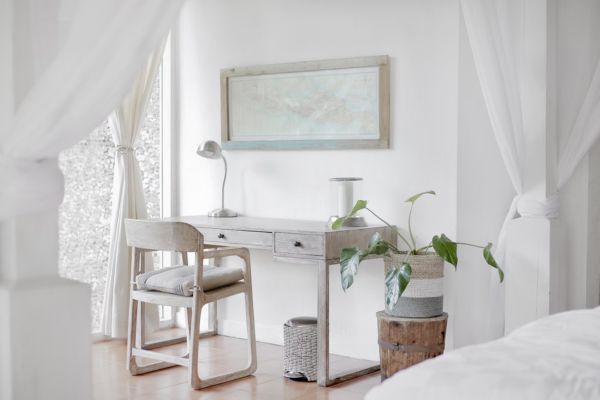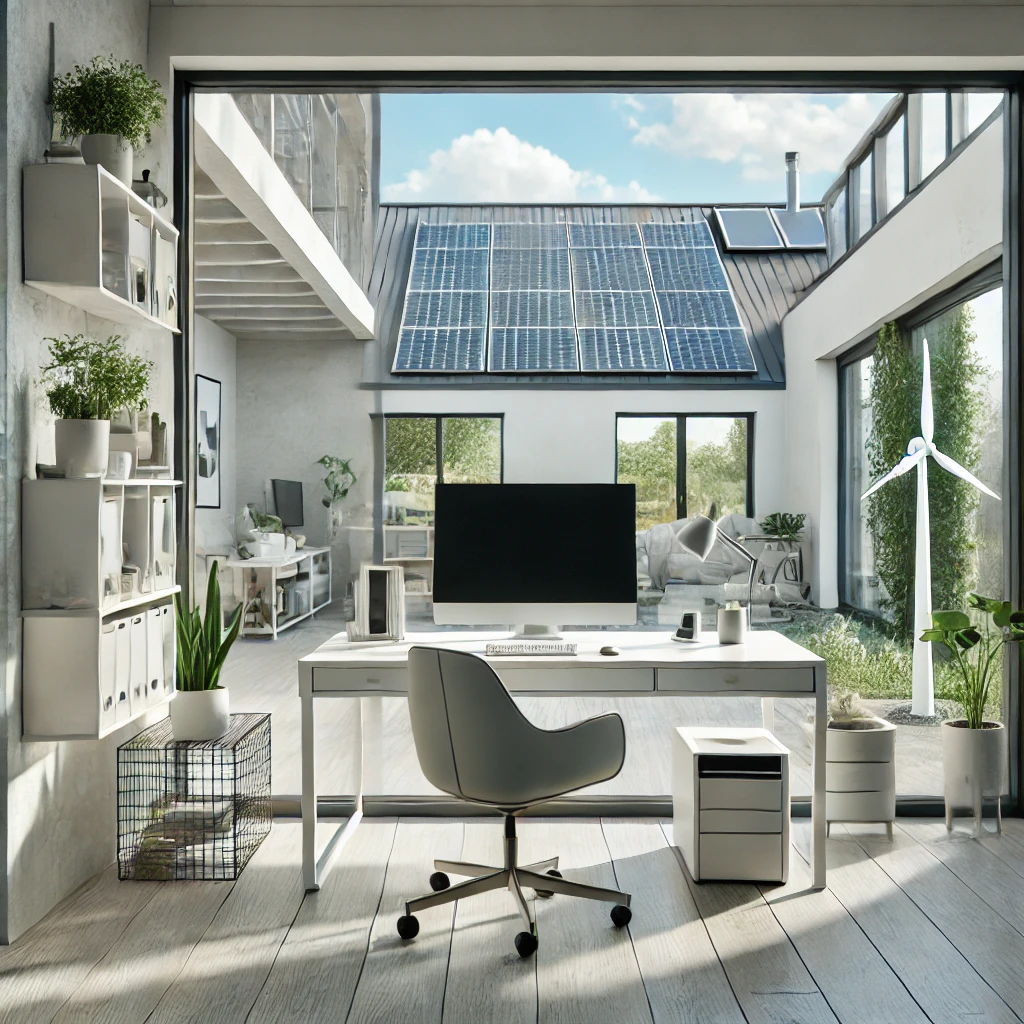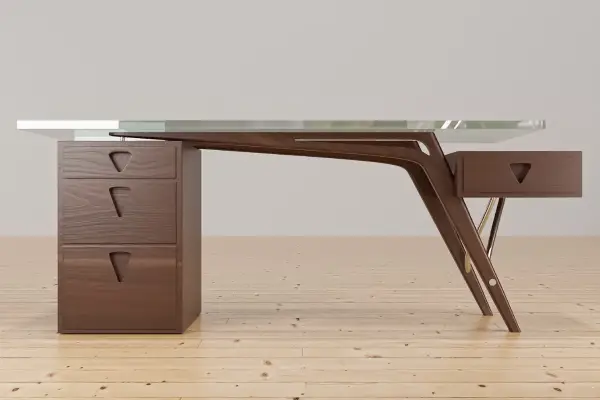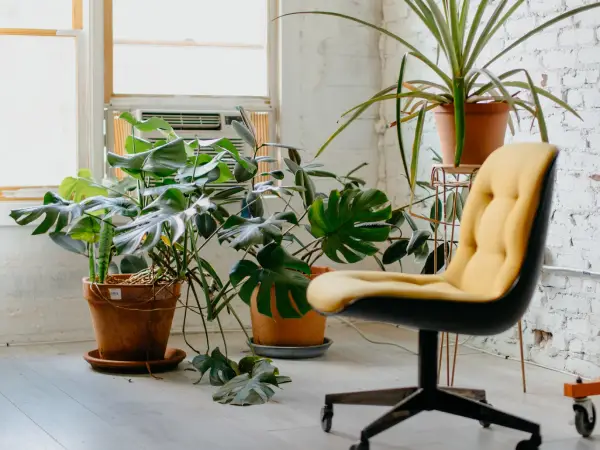In today’s fast-paced world, our home offices have become more than just a workspace; they are a sanctuary where creativity and productivity converge. As remote work becomes increasingly prevalent, the importance of maintaining a clutter-free, minimalist home office cannot be overstated. A minimalist workspace not only looks appealing but also significantly impacts our ability to focus, think clearly, and perform efficiently.
Decluttering your home office is a crucial step towards achieving a minimalist environment that fosters productivity and mental clarity. When your workspace is free from unnecessary distractions, you can channel your energy into what truly matters – your work. A tidy, organized space reduces stress, enhances creativity, and allows you to navigate your tasks with ease.
In this article, we will delve into essential tips and tricks to help you declutter your minimalist home office. From understanding the principles of minimalism to practical steps for maintaining a tidy workspace, we will guide you through the process of creating a serene and efficient home office. Whether you’re starting from scratch or looking to refine your existing setup, these insights will empower you to cultivate a productive and clutter-free environment.
Understanding Minimalism in the Home Office
Definition and Principles of Minimalism
Minimalism is a lifestyle and design philosophy that emphasizes simplicity and intentionality. It involves stripping away the non-essential to focus on what truly matters. In the context of a home office, minimalism means creating a workspace that is functional, organized, and free from unnecessary clutter. The key principles of minimalism include:
- Simplicity: Keeping your workspace simple and straightforward, free from excessive decorations and unnecessary items.
- Intentionality: Every item in your office should serve a purpose and contribute to your work efficiency.
- Functionality: Prioritizing items and setups that enhance productivity and ease of use.
Mindfulness: Being conscious of what you bring into your workspace and regularly assessing its necessity.
Benefits of a Minimalist Home Office Setup
Adopting a minimalist approach in your home office offers numerous benefits that can significantly improve your work life. Here are some of the key advantages:
- Increased Focus and Productivity:
- A clutter-free environment reduces distractions, allowing you to concentrate better on your tasks.
- With fewer items competing for your attention, you can streamline your workflow and complete tasks more efficiently.
- An organized space helps you find what you need quickly, minimizing downtime and interruptions.
- Reduced Stress and Anxiety:
- A tidy and orderly workspace promotes a sense of calm and control.
- Clutter can be overwhelming and stressful; eliminating it can create a more serene and peaceful work environment.
- A minimalist office can help reduce decision fatigue, as you have fewer items to manage and maintain.
- Enhanced Creativity and Efficiency:
- A clean and simple workspace provides a blank canvas for your thoughts, fostering creativity.
- With fewer distractions, you can think more clearly and develop innovative solutions.
- An efficient layout and organized tools enable you to work more smoothly and effectively, maximizing your productivity.
By embracing minimalism in your home office, you create a space that supports your professional goals and enhances your overall well-being. The following sections will guide you through practical steps and strategies to achieve and maintain a minimalist, clutter-free workspace.
Assessing Your Current Home Office Setup
Taking Inventory of Your Office Items
Before diving into the decluttering process, it’s essential to take a comprehensive inventory of your current home office setup. This step helps you understand what you have and evaluate each item’s importance and functionality. Start by:
- Listing All Items: Write down everything in your office, from furniture and electronics to stationery and decor. This list should include every item, no matter how small.
- Categorizing Items: Group your items into categories such as work essentials, storage, personal items, and decor. This will help you see where you might have excess.
- Evaluating Usage: Consider how often you use each item. Items that are used daily should be easily accessible, while those used infrequently can be stored away or discarded.
Identifying Essential Versus Non-Essential Items
Once you have a clear inventory, the next step is to distinguish between essential and non-essential items. This process involves critical evaluation and honesty about what truly supports your work. Here’s how:
- Essential Items: These are items that you use regularly and that contribute directly to your productivity. Examples include your computer, desk, chair, essential office supplies, and tools specific to your job.
- Non-Essential Items: These are items that you rarely use, that duplicate other items, or that don’t add significant value to your work. This category might include outdated equipment, excessive decor, and non-functional items.
Ask yourself the following questions for each item:
- Do I use this item regularly?
- Does it serve a specific and necessary purpose in my work?
- Would my productivity suffer if this item were removed?
Understanding the Impact of Clutter on Your Work
Clutter is more than just a visual distraction; it can have profound effects on your work performance and mental health. Understanding these impacts can motivate you to commit to a minimalist office setup:
- Mental Clarity: Clutter can overwhelm your senses, making it harder to focus and think clearly. A tidy workspace fosters a clear mind and better concentration.
- Stress and Anxiety: Excess items can create a sense of chaos and disorder, leading to increased stress and anxiety. An organized space promotes calmness and a sense of control.
- Productivity: Constantly searching for misplaced items wastes time and interrupts your workflow. An organized office ensures everything has a place, streamlining your tasks and boosting efficiency.
- Creativity: A cluttered environment can stifle creativity by causing cognitive overload. A minimalist space provides the mental room needed for innovative thinking and problem-solving.
By assessing your current home office setup, identifying what’s essential, and understanding the detrimental effects of clutter, you lay the groundwork for a more productive, stress-free, and efficient workspace. The next sections will guide you through the practical steps to achieve and maintain this minimalist ideal.
Decluttering Steps and Strategies
Start with a Clean Slate
The first step in decluttering your home office is to start with a clean slate. This means completely emptying your office space, so you can clearly see what you have and make intentional decisions about what to keep. Here’s how to do it:
- Empty Your Office Space Completely:
- Remove everything from your office, including furniture, equipment, supplies, and decor.
- Place all items in a different room or area so that your office is entirely empty.
- Clean and Prepare the Area for a Fresh Start:
- Clean the entire space thoroughly, including floors, surfaces, and windows.
- Consider repainting or making any repairs needed to create a fresh, inviting environment.
- Reflect on how you want your minimalist office to look and feel, and keep this vision in mind as you move forward.
Prioritize Essentials
With a clean slate, the next step is to prioritize the essential items that are crucial for your work. This involves careful consideration of what you truly need to be productive and efficient.
- Determine the Most Crucial Items for Your Work:
- Think about your daily tasks and what tools or equipment are necessary to complete them.
- Focus on items that directly contribute to your productivity and work quality.
- Create a List of Must-Have Office Supplies and Equipment:
- Make a list of essential items, such as your computer, desk, chair, printer, and any specialized tools related to your job.
- Include only the supplies that you use regularly, such as pens, notebooks, and planners.
- Be honest about what is truly necessary and avoid the temptation to include items that are rarely used or purely decorative.
Adopt the “One In, One Out” Rule
To maintain a minimalist home office, it’s important to adopt habits that prevent future clutter. One effective strategy is the “One In, One Out” rule, which helps you maintain balance and avoid accumulating unnecessary items.
- For Every New Item Brought into the Office, Remove an Old One:
- Each time you introduce a new item to your office, commit to removing an existing item.
- This rule ensures that your office doesn’t become overcrowded and that you continually evaluate the necessity of each item.
- Maintain a Balance and Prevent Future Clutter:
- Regularly review your office setup and remove items that are no longer useful or essential.
- Stay mindful of what you bring into your office and avoid impulse purchases that don’t align with your minimalist goals.
- Make it a habit to assess your office space periodically, ensuring that it remains functional, organized, and clutter-free.
By following these decluttering steps and strategies, you can create a minimalist home office that supports your productivity, reduces stress, and enhances your overall work experience. The next sections will offer additional tips for maintaining this streamlined and efficient workspace.
Decluttering Steps and Strategies
Use Storage Solutions Wisely
Effective storage solutions are key to maintaining a minimalist home office. By organizing your items efficiently, you can keep your workspace tidy and functional.
- Utilize Shelves, Drawers, and Organizers Effectively:
- Shelves: Use wall-mounted shelves to store books, documents, and decorative items. This keeps your desk surface clear and maximizes vertical space.
- Drawers: Organize your drawers with dividers and trays to separate office supplies, such as pens, paper clips, and notepads. Label each section for easy access.
- Organizers: Invest in desktop organizers for frequently used items. Clear containers or bins can store small items while keeping them visible and accessible.
- Keep Frequently Used Items Within Easy Reach:
- Place essential tools and supplies within arm’s reach to minimize disruption during your workday.
- Store less frequently used items in cabinets or on higher shelves to keep your immediate workspace clear.
Go Digital Where Possible
Embracing digital tools and storage solutions can significantly reduce physical clutter in your home office.
- Reduce Paper Clutter by Digitizing Documents:
- Scan important documents and store them digitally. Use apps or scanners to convert paper files into digital formats.
- Shred or recycle paper documents once they have been digitized and stored securely.
- Use Cloud Storage and Digital Tools for Organization:
- Utilize cloud storage services like Google Drive, Dropbox, or OneDrive to store and organize your files. This ensures that your documents are accessible from any device and reduces the need for physical storage.
- Adopt digital note-taking apps, project management tools, and calendar applications to keep track of tasks and schedules without relying on paper.
Create Zones for Different Activities
Creating specific zones in your home office for different activities can help you stay organized and maintain a clutter-free environment.
- Designate Specific Areas for Tasks Like Work, Storage, and Relaxation:
- Work Zone: Set up a dedicated area for your primary work activities. This should include your desk, chair, computer, and essential office supplies.
- Storage Zone: Allocate a space for storing items you don’t need regularly, such as files, reference materials, and extra supplies. Use cabinets, shelves, or storage bins to keep this area organized.
- Relaxation Zone: If space allows, create a small area for relaxation or quick breaks. This could include a comfortable chair, a small table, or a mat for stretching.
- Ensure Each Zone Is Functional and Clutter-Free:
- Keep each zone well-defined and free of unnecessary items. This helps you focus on the task at hand without distractions.
- Regularly evaluate each zone to ensure it remains functional and aligned with your needs. Adjust as necessary to maintain an efficient workflow.
By using storage solutions wisely, going digital where possible, and creating distinct zones for different activities, you can achieve and maintain a minimalist home office. These strategies will help you stay organized, reduce clutter, and create a workspace that enhances your productivity and well-being. The following sections will provide additional tips for maintaining this streamlined and efficient environment.
Maintaining a Decluttered Home Office
Daily Habits to Keep Your Office Tidy
Maintaining a decluttered home office requires consistent daily habits. These small actions can prevent clutter from accumulating and keep your workspace organized.
- 5-Minute End-of-Day Cleanup Routine:
- Clear Your Desk: At the end of each workday, take five minutes to clear your desk of any papers, coffee cups, and other items that have accumulated. Put everything back in its designated place.
- Organize Supplies: Ensure that pens, notebooks, and other supplies are stored neatly in their organizers or drawers.
- Digital Cleanup: Close all unnecessary tabs on your computer, organize your digital files, and back up any important work to cloud storage.
- Regularly Assess and Remove Unnecessary Items:
- Daily Assessment: As you go about your day, be mindful of items that are no longer needed or useful. Remove these items immediately to prevent clutter buildup.
- Declutter Hotspots: Pay attention to areas that tend to collect clutter, such as your desk surface or a specific drawer, and keep these areas tidy.
Implementing a Weekly or Monthly Decluttering Schedule
In addition to daily habits, a regular decluttering schedule can help maintain a minimalist home office over the long term.
- Weekly Decluttering:
- Review Your Workspace: Once a week, spend 15-30 minutes reviewing your workspace. Check for items that are out of place or no longer needed.
- File Organization: Go through your physical and digital files, discarding or archiving documents that are no longer relevant.
- Supply Check: Assess your office supplies and replenish items that are running low. Remove duplicates or supplies that are no longer useful.
- Monthly Decluttering:
- Deep Clean: Once a month, take an hour to do a deeper clean of your office. Dust surfaces, clean your computer and other equipment, and vacuum or mop the floor.
- Inventory Check: Revisit your inventory list to ensure that all items are still essential and functional. Remove anything that no longer serves a purpose.
- Reassess Zones: Evaluate the functionality of your designated zones and make adjustments as needed to improve efficiency and organization.
Staying Committed to the Minimalist Mindset
Maintaining a minimalist home office requires ongoing commitment to the principles of minimalism. Here’s how to stay dedicated:
- Mindful Consumption:
- Intentional Purchases: Before buying new office items, ask yourself if they are truly necessary and how they will contribute to your productivity.
- Quality Over Quantity: Invest in high-quality, multifunctional items that serve multiple purposes and are built to last.
- Regular Reflection:
- Evaluate Your Needs: Periodically reflect on your work habits and needs. Adjust your office setup to support any changes in your workflow.
- Minimalist Inspiration: Stay inspired by reading books, articles, and blogs about minimalism. Engage with minimalist communities online for tips and motivation.
- Consistency is Key:
- Routine Reinforcement: Incorporate your decluttering routines into your daily and weekly schedules. Consistency will make these habits second nature.
- Celebrate Progress: Acknowledge and celebrate the progress you make in maintaining a clutter-free workspace. This positive reinforcement will keep you motivated.
By adopting daily habits, implementing regular decluttering schedules, and staying committed to the minimalist mindset, you can maintain a decluttered home office that supports your productivity and well-being. The following sections will offer additional tips and insights to personalize and enhance your minimalist workspace.
Personalizing Your Minimalist Office
Adding Personal Touches Without Compromising Minimalism
A minimalist home office doesn’t mean it has to be devoid of personality. You can add personal touches that make your space feel uniquely yours while still maintaining a clean and uncluttered environment. Here’s how:
- Focus on Quality, Not Quantity:
- Select a few high-quality, meaningful items that reflect your personality and style. These could be a favorite piece of artwork, a special photograph, or a unique desk accessory.
- Ensure that each item has a designated place and doesn’t contribute to visual clutter.
- Maintain a Cohesive Color Palette:
- Stick to a neutral or harmonious color palette that aligns with your minimalist aesthetic. This helps create a calm and cohesive look.
- Use pops of color sparingly to add interest without overwhelming the space.
- Functional Decor:
- Choose decorative items that also serve a practical purpose. For example, a stylish lamp, a beautiful clock, or a decorative storage box.
Simple and Meaningful Decorations
When adding decorations to your minimalist office, opt for simple and meaningful pieces that enhance your space without overwhelming it.
- Artwork and Photos:
- Display a single piece of artwork or a few carefully chosen photographs that inspire you. Use frames that match your office’s color scheme for a unified look.
- Consider rotating your artwork or photos periodically to keep your space feeling fresh and dynamic.
- Inspirational Quotes:
- Frame a favorite quote or mantra that motivates you. Place it in a location where you can easily see it while working.
- Opt for clean, simple designs that don’t clutter your visual space.
- Minimalist Accessories:
- Add a sleek desk organizer or a minimalist clock. These can be both functional and decorative, enhancing the aesthetics of your office.
- Use stylish, yet simple, office supplies such as pens, notebooks, and planners that complement your minimalist design.
Plants and Natural Elements for a Refreshing Environment
Incorporating plants and natural elements into your minimalist home office can create a refreshing and calming atmosphere.
- Houseplants:
- Choose low-maintenance houseplants that thrive indoors, such as succulents, snake plants, or pothos. These plants are easy to care for and add a touch of greenery to your space.
- Use simple, elegant pots that match your office’s decor. Avoid overly decorative pots that can detract from the minimalist aesthetic.
- Natural Light:
- Maximize natural light by keeping windows unobstructed and using sheer curtains or blinds. Natural light can make your space feel more open and inviting.
- Position your desk near a window if possible to benefit from the positive effects of natural light on your mood and productivity.
- Natural Materials:
- Incorporate natural materials such as wood, stone, or bamboo in your office furniture and decor. A wooden desk, a stone paperweight, or a bamboo plant stand can add warmth and texture to your space.
- Keep these elements simple and streamlined to maintain a minimalist look.
By adding personal touches, simple decorations, and natural elements, you can personalize your minimalist home office without compromising its clean and uncluttered aesthetic. These small yet meaningful additions will make your workspace feel more inviting and uniquely yours, enhancing both your comfort and productivity. The following sections will discuss common pitfalls to avoid and provide a conclusion with final thoughts on maintaining a minimalist home office.
Common Pitfalls to Avoid
Accumulating “Just in Case” Items
One of the biggest challenges to maintaining a minimalist home office is the tendency to accumulate items “just in case” you might need them in the future. This mindset can quickly lead to clutter and overwhelm. Here’s how to avoid it:
- Evaluate Necessity:
- Before adding any item to your office, ask yourself if it’s truly necessary for your current work. If you haven’t used it in the past six months, it’s likely not essential.
- Be honest about the likelihood of needing the item in the near future. If the chances are slim, consider letting it go.
- Adopt a Minimalist Inventory:
- Keep a minimalist inventory where each item has a clear purpose and adds value to your work. Avoid holding onto items out of fear of future need.
- Regularly review your inventory and purge items that no longer serve a critical function.
- Borrow or Share:
- For items you might need occasionally, consider borrowing from a friend or using a shared resource rather than keeping them in your office.
Overcomplicating the Organization Process
Another common pitfall is overcomplicating the organization process. While it’s important to have a system in place, overly complex systems can be difficult to maintain and lead to frustration.
- Keep It Simple:
- Opt for straightforward, easy-to-follow organizational systems. Simple filing methods, clear labeling, and accessible storage solutions work best.
- Avoid overly intricate storage solutions that require constant upkeep and adjustment.
- Functional Organization:
- Focus on functionality over perfection. Your organization system should serve your work habits and needs, not create additional tasks.
- Organize items based on how frequently you use them. Keep everyday items within reach and store less frequently used items out of the way.
- Limit Storage Solutions:
- Resist the urge to buy multiple organizers or storage systems. Too many solutions can create more clutter. Choose a few effective storage solutions that meet your needs.
Failing to Maintain Consistency
Maintaining a minimalist home office requires ongoing effort and consistency. Without regular upkeep, clutter can quickly return, undoing your hard work.
- Establish Routines:
- Develop daily, weekly, and monthly routines to keep your office organized. Consistent habits, like the end-of-day cleanup and regular decluttering sessions, are essential.
- Make these routines part of your schedule to ensure they become ingrained habits.
- Mindful Habits:
- Stay mindful of what you bring into your office. Practice intentional consumption and regularly assess whether new items are necessary.
- Avoid impulse purchases and be selective about what you add to your workspace.
- Accountability:
- Hold yourself accountable for maintaining a clutter-free environment. Set reminders or enlist a friend or colleague to help keep you on track.
- Periodically reflect on your minimalist goals and adjust your strategies as needed to stay aligned with your vision.
By avoiding the accumulation of “just in case” items, keeping the organization process simple, and maintaining consistency, you can overcome common pitfalls and sustain a minimalist home office. These strategies will help you enjoy a clutter-free, productive workspace that enhances your efficiency and well-being. The final section will conclude with key takeaways and encouragement to maintain your minimalist approach.
Conclusion
Recap of the Essential Tips and Tricks for Decluttering
Decluttering your minimalist home office is a transformative process that can enhance your productivity, reduce stress, and create a more enjoyable work environment. Let’s recap the key tips and tricks:
- Start with a Clean Slate:
- Empty your office space completely, clean it thoroughly, and prepare for a fresh start.
- Prioritize Essentials:
- Determine the most crucial items for your work and create a list of must-have office supplies and equipment.
- Adopt the “One In, One Out” Rule:
- For every new item brought into the office, remove an old one to maintain balance and prevent future clutter.
- Use Storage Solutions Wisely:
- Utilize shelves, drawers, and organizers effectively, and keep frequently used items within easy reach.
- Go Digital Where Possible:
- Reduce paper clutter by digitizing documents and using cloud storage and digital tools for organization.
- Create Zones for Different Activities:
- Designate specific areas for tasks like work, storage, and relaxation, ensuring each zone is functional and clutter-free.
- Maintain Daily Habits:
- Implement a 5-minute end-of-day cleanup routine and regularly assess and remove unnecessary items.
- Establish Regular Decluttering Schedules:
- Implement weekly and monthly decluttering sessions to keep your workspace organized.
- Stay Committed to the Minimalist Mindset:
- Practice mindful consumption, regular reflection, and consistency to maintain a clutter-free environment.
Encouragement to Start the Decluttering Journey
Embarking on the decluttering journey may seem daunting, but the rewards are well worth the effort. Start small, take it one step at a time, and gradually transform your home office into a minimalist haven. Remember, every little bit counts, and even small changes can make a significant difference.
Final Thoughts on the Benefits of a Minimalist Home Office
A minimalist home office is not just about having a tidy space; it’s about creating an environment that supports your best work and enhances your overall well-being. By reducing clutter, you gain mental clarity, increased productivity, and a sense of calm. Your office becomes a place where you can focus, create, and thrive.
As you continue your decluttering journey, keep in mind the principles and tips shared in this article. Stay motivated by the positive changes you see and feel in your workspace and in your work habits. Embrace the minimalist mindset, and let your home office be a reflection of simplicity, efficiency, and peace.
Start today, and enjoy the countless benefits of a decluttered, minimalist home office.






